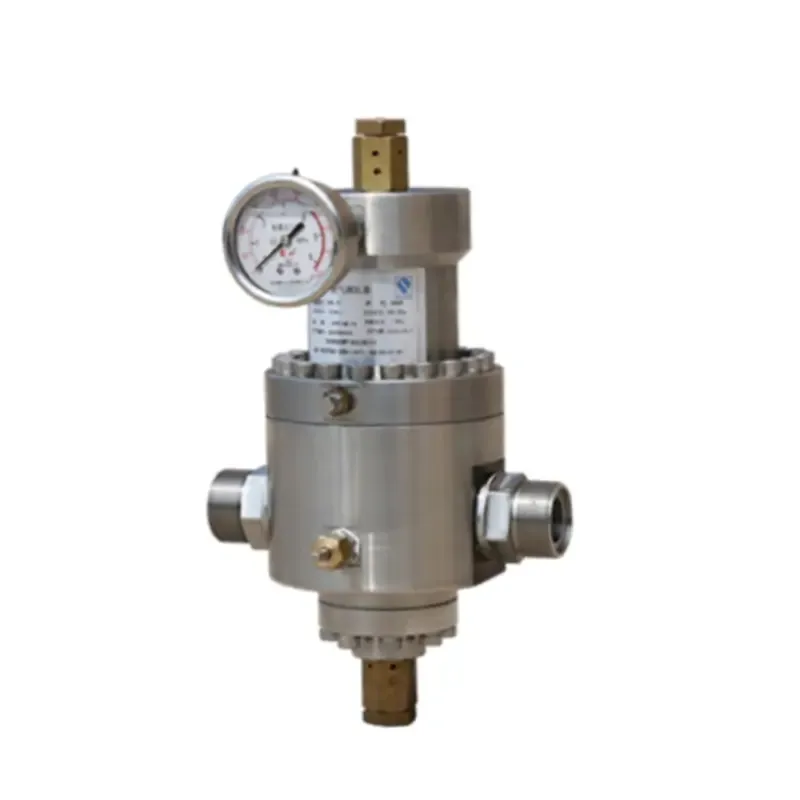
Nov . 05, 2024 20:36
Back to list
منظم ضغط الغاز
Understanding Gas Pressure Regulators Function and Importance
Gas pressure regulators are critical components in various industries, including manufacturing, automotive, aerospace, and even in home applications like gas stoves and heating systems. These devices play a pivotal role in controlling the pressure of gas as it flows from a supply source to the intended usage point. Understanding the function, design, and importance of gas pressure regulators is essential for ensuring safety and efficiency in gas applications.
What is a Gas Pressure Regulator?
A gas pressure regulator is a mechanical device that reduces the high pressure of gas from a storage or supply source to a lower, usable pressure. Essentially, it acts as a control valve that maintains a constant downstream pressure, regardless of fluctuations in the upstream supply pressure or variations in gas flow demand. This function is vital for systems that require precise gas delivery for optimal performance and safety.
How Does a Gas Pressure Regulator Work?
The working mechanism of a gas pressure regulator involves a few essential components such as a diaphragm, a spring, and inlet and outlet ports. When high-pressure gas enters the regulator, it acts on the diaphragm. As the pressure increases, the diaphragm moves, which in turn compresses a spring. This movement adjusts the size of the outlet port, allowing more or less gas to escape depending on the demand downstream.
This automatic adjustment ensures that the pressure remains relatively constant even if the upstream pressure fluctuates or if the gas demand from the downstream system changes. Therefore, the primary function of a gas pressure regulator is not only to reduce pressure but also to stabilize it, ensuring safe and efficient operation.
Types of Gas Pressure Regulators
Gas pressure regulators come in various types, tailored to specific applications and requirements. The main types include
.
2. Two-stage Regulators These are preferred in applications with more significant pressure variations. The first stage reduces the pressure to an intermediate level, while the second stage further reduces it to the required lower level. This design enhances stability and accuracy in pressure regulation.
منظم ضغط الغاز

3. Relief Regulators These regulators feature a built-in relief valve that prevents overpressure conditions by venting excess gas when the pressure exceeds a predetermined level.
4. Electronic Regulators For high-tech applications, electronic regulators use sensors and feedback mechanisms to provide precise pressure control via electronic signals.
Importance of Gas Pressure Regulators
Gas pressure regulators are vital for several reasons
- Safety High-pressure gases can pose significant hazards, such as explosions or leaks. Regulators help mitigate these risks by ensuring that gas is delivered at safe operating pressures.
- Efficiency By maintaining consistent pressure, these regulators ensure that gas-powered systems operate efficiently, reducing waste and operational costs.
- Equipment Protection Many gas-dependent devices require specific pressure levels to function correctly. Regulators protect sensitive equipment from pressure spikes that could lead to damage or failure.
- Regulatory Compliance Many industries are subject to regulations regarding gas usage and safety. Properly functioning regulators help ensure compliance with these standards, reducing liability risks.
Conclusion
In summary, gas pressure regulators are essential components that ensure the safe and efficient use of gas in various applications. Their ability to control and stabilize gas pressure not only enhances the performance of gas systems but also protects users and equipment from potential hazards. Understanding the function and importance of these devices is crucial for anyone involved in industries that rely on gas technologies. As technology advances, the design and function of gas pressure regulators will continue to evolve, reinforcing their significance in modern applications.
Next:
Latest news
-
Safety Valve Spring-Loaded Design Overpressure ProtectionNewsJul.25,2025
-
Precision Voltage Regulator AC5 Accuracy Grade PerformanceNewsJul.25,2025
-
Natural Gas Pressure Regulating Skid Industrial Pipeline ApplicationsNewsJul.25,2025
-
Natural Gas Filter Stainless Steel Mesh Element DesignNewsJul.25,2025
-
Gas Pressure Regulator Valve Direct-Acting Spring-Loaded DesignNewsJul.25,2025
-
Decompression Equipment Multi-Stage Heat Exchange System DesignNewsJul.25,2025

